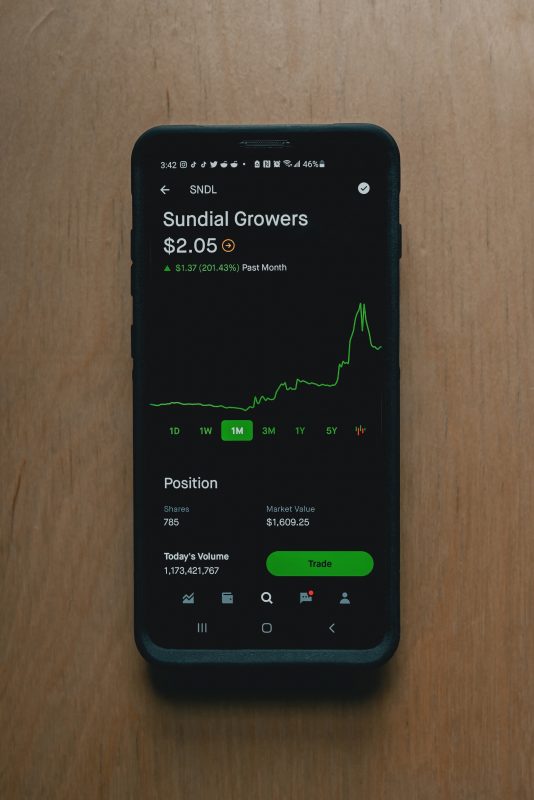Picture this: you're scrolling through social media between classes, gigs, and endless coffee runs when a question pops into your head—should you be saving for retirement with an FRS Pension Plan or fueling your future financial freedom with an FRS Investment Plan? In today’s fast-paced, hustle culture, every dollar counts, and choosing the right plan is like picking the perfect playlist for your financial journey. Whether you’re a millennial trying to balance student loans with side hustles or a Gen Z enthusiast dreaming up innovative ways to secure your future, understanding the ins and outs of these plans isn’t just smart—it’s essential for your long-term financial wellbeing.
FRS Investment Plan Vs FRS Pension Plan Table of Contents
Decoding the Essentials: FRS Investment Plan vs FRS Pension Plan
The Nuts and Bolts: How Do These Plans Work?
Comparative Analysis: Weighing the Pros, Cons, and What They Mean for You
The Advantages Unpacked: FRS Investment Plan
The Advantages Unpacked: FRS Pension Plan
Financial Impact: Tax Benefits, Retirement Options, and Long-Term Considerations
Real Stories: Case Studies that Illuminate the Path
Crafting Your Own Financial Strategy: Steps to Decide Between FRS Investment and FRS Pension Plans
Resources and Community Support: Your Next Steps
Frequently Asked Questions About FRS Investment and Pension Plans
Decoding the Essentials: FRS Investment Plan vs FRS Pension Plan
When it comes to planning for your future, especially under the umbrella of the FRS (Financial Resilience Strategy), two heavyweights enter the arena: the FRS Investment Plan and the FRS Pension Plan. At first glance, they might appear to be two sides of the same coin, but dive in deeper and you’ll realize each has its own personality, perks, and pitfalls.
The FRS Investment Plan is essentially your “build-your-wealth” toolkit, designed to give you flexibility, diverse investment options, and the ability to grow your money over time. It’s perfect for those who love a bit of risk mixed with the thrill of watching their money work for them. On the flip side, the FRS Pension Plan is like your financial safety net. It focuses on steady, dependable income after retirement, ensuring that when you’re ready to hang up your work boots, you won’t have to worry about making ends meet.
Both plans are part of the broader FRS philosophy, which is all about securing a future that’s as vibrant and dynamic as your present. However, the key differences lie in their approaches: while the Investment Plan is dynamic, hands-on, and geared towards growth in the here and now, the Pension Plan is more structured, offering consistent benefits for a comfortable future.
The Nuts and Bolts: How Do These Plans Work?
Let’s break it down. At its core, the FRS Investment Plan allows you to contribute funds that are then invested in a mix of stocks, bonds, and other financial instruments. These investments, which are chosen based on your individual risk tolerance and financial goals, have the potential to yield high returns over time. However, as every savvy investor knows, higher returns come with higher risks. The plan is best suited for those who love a little adrenaline in their financial lives and don’t mind riding out the occasional market dip.
The FRS Pension Plan, in contrast, shifts the focus from growth to stability. It’s structured to build a stable income stream for your retirement years. Your contributions are pooled together and managed in a way that prioritizes steady, predictable returns rather than explosive growth. Think of it as opting for a rock-solid, side-gripping safety harness for your golden years, ensuring that you have a reliable income when you decide to swap your daily grind for relaxed afternoons on the porch.
Both plans require you to commit regularly—be it monthly contributions or annual deposits—but they cater to different strategies. With the Investment Plan, you’re essentially staking a claim on the future value of diversified assets, while the Pension Plan operates on a structured formula that guarantees you a fixed income once you officially decide to retire.
Comparative Analysis: Weighing the Pros, Cons, and What They Mean for You
If you’re someone who adores making detailed comparisons before splurging on that trendy new sneaker drop, you’re in the right place. Let’s pit the two plans against each other.
Return Potential
The FRS Investment Plan is where you might see exponential growth if you make smart, diversified choices and ride market cycles like a boss. However, it comes with volatility. One minute you’re riding high on the gains, and the next, unpredictable market shifts might throw you a curveball. Conversely, the FRS Pension Plan offers lower, but much more stable returns, ensuring you have a consistent income to cover your fixed monthly expenses after retirement.
Risk and Volatility
Investments are like spicy food—delicious when done right, but a little too much spice can leave you breathless. The Investment Plan exposes you to market risks, meaning your portfolio’s value may fluctuate. The Pension Plan, while seemingly less glamorous due to its conservative nature, minimizes unexpected swings, allowing you to sleep easy at night.
Flexibility and Liquidity
Do you prefer having control over your money with few strings attached? The Investment Plan typically offers better liquidity, allowing you to dip into your funds (maybe for that impromptu weekend getaway) without too much hassle. The Pension Plan, however, usually ties your money up until retirement age, sacrificing some flexibility for long-term reliability.
Tax Benefits and Other Perks
Both plans are designed with tax efficiency in mind, but they operate differently. The Investment Plan might offer tax-advantaged growth options, capital gains treatments, and other incentives to keep you motivated and your portfolio robust. The Pension Plan often provides tax relief on contributions and a steady income post-retirement that might be taxed at a lower rate. Choosing between the two can sometimes be a game of balancing immediate tax savings against future income stability.
Essentially, if you’re a hands-on, risk-tolerant individual with an eye on rapid growth, the FRS Investment Plan might be your jam. But if you prefer a “set it and forget it” approach with guaranteed income during your retirement years, then the Pension Plan stands out.
The Advantages Unpacked: FRS Investment Plan
Let’s give a shout-out to the FRS Investment Plan—the maverick of the two. It’s designed for those with an appetite for potential high rewards, offering flexibility and the thrill of navigating diverse market instruments.
Growth-Oriented Mindset
With this plan, you’re not just saving money—you’re investing in your future. Every contribution is a building block that can multiply over time if played right. This suits financial enthusiasts who enjoy tracking market trends and making adjustments based on economic shifts.
Portfolio Diversification
One of the coolest aspects is the ability to diversify your investment portfolio. Spreading out your assets can protect you from market volatility, meaning that a downturn in one segment might be offset by gains in another. Think of it as your personal mixtape of financial instruments, each playing a role in the harmony of your wealth-building strategy.
Increased Liquidity
Liquidity is another strong suit. Whether you’re looking to seize a sudden opportunity or simply need access to funds in an emergency, having the flexibility to withdraw or reallocate investments can be a major bonus. It offers the kind of adaptability that many millennials and Gen Z individuals crave in today’s unpredictable economic landscape.
Tax-Advantaged Growth
The Investment Plan often comes loaded with opportunities for tax-advantaged growth. With smart planning and a long-term vision, you can leverage deductions and defer tax liabilities, which adds an extra boost to your portfolio performance.
All of these advantages work together to create a dynamic, robust system of wealth accumulation that evolves as your financial goals change. If you’re driven by the idea of actively engaging in your financial journey, this plan brings the excitement and the potential for exponential rewards.
The Advantages Unpacked: FRS Pension Plan
Now, let’s flip the coin and shine a spotlight on the FRS Pension Plan—a beacon of consistency and security for your future self.
Steady Income Post-Retirement
The most compelling feature of the Pension Plan is its promise of regular, predictable income during your retirement years. For those who envision a future without financial uncertainties, this plan provides a dependable revenue stream, ensuring that your later years are as stress-free as possible.
Predictable Benefits
Unlike the rollercoaster ride of the investment market, the Pension Plan’s benefits are calculated and predictable. This means you know what to expect in terms of monthly payouts, making it easier to plan expenses, vacations, and all the fun stuff that comes with retirement.
Lower Risk Exposure
If the mere thought of market volatility gives you anxious vibes, the Pension Plan is designed with you in mind. Its focus on minimizing exposure to high-risk assets means that while you might miss out on explosive growth, you also avoid the heart-stopping ups and downs that characterize more aggressive strategies.
Tax Efficiency in Retirement
Many pension plans feature tax benefits that kick in during your retirement years, often resulting in lower tax rates on your income. This tax efficiency is a strategic advantage if you anticipate your post-retirement income falling into a lower tax bracket.
For those who prize stability and a guaranteed safety net, the Pension Plan stands out as the ideal choice—even if it means trading off the higher growth potential of the Investment Plan. It’s all about aligning your lifestyle and future goals with the plan that best fits your personal needs.
Financial Impact: Tax Benefits, Retirement Options, and Long-Term Considerations
Delving deep into the financial nitty-gritty, both plans are loaded with benefits that go beyond the basic principle of saving. Let’s break down some of the more detailed factors that should be front and center in your decision-making process.
Tax-Deferred Growth and Deductions
One of the major perks of an FRS Investment Plan is the potential for tax-deferred growth. This means that the money you make from investments isn’t taxed until you withdraw it, allowing your funds to compound over time. For those who are disciplined about contributing regularly, this deferral can translate into significant long-term growth.
Tax Relief on Contributions
The FRS Pension Plan is typically designed to give you tax relief on the money you pump into it. This immediate benefit can lower your taxable income in the years you contribute, offering some breathing room each tax season. For many, this built-in tax advantage is a key selling point.
Retirement Income Security
Both plans aim to provide financial security, but through different mechanisms. The Pension Plan guarantees a smooth transition to a regular income during retirement, while the Investment Plan can potentially leave you with a larger lump sum that you’re free to manage as you see fit—whether that means converting it into a pension-like stream through annuities or leveraging it for other opportunities.
Long-Term Flexibility vs. Stability
While the Investment Plan keeps your options open and offers long-term flexibility, the Pension Plan locks in benefits that make budgeting straightforward later in life. The decision boils down to your comfort with risk versus your need for security, and understanding this nuance can steer you toward the plan that best supports your overarching financial objectives.
Think about your lifestyle, financial goals, and even your personality—are you a risk-taker who loves an active role in managing assets, or do you crave the assurance of a guaranteed income stream when you finally kick back and relax? Each plan has its merits, and the best strategy might even involve a balanced blend of both.
Real Stories: Case Studies that Illuminate the Path
Sometimes the best way to understand complex financial decisions is to hear real-life stories from people who have navigated these choices. Let’s dive into a few case studies that not only bring these plans to life but do so in a way that’s as relatable as your favorite Netflix series.
The Ambitious Tech Entrepreneur
Meet Alex—a tech-savvy entrepreneur in his early thirties who’s no stranger to risk. With various start-ups under his belt and a knack for spotting trends, Alex loved the dynamic energy of the FRS Investment Plan. He contributed regularly, used his savvy to diversify across tech stocks and emerging markets, and even dabbled in green energy initiatives. Though market dips kept him on his toes, Alex’s high tolerance for risk, coupled with his diligent research, allowed his portfolio to grow impressively. Today, while he remains unafraid to pivot and adjust his portfolio, he’s also started setting aside extra funds into a stable Pension Plan for that extra layer of security. His journey perfectly illustrates the balancing act between risk, reward, and future security.
The Steady Professional
Consider Jamie, a dedicated public servant in her forties, who found solace in the predictability of the FRS Pension Plan. With a clear vision for retirement that included travel, hobbies, and time with family, Jamie opted for the plan offering regular income. Her contributions were less about making aggressive gains and more about ensuring that once she hung up her work hat, her financial future remained secure. Jamie’s strategy worked wonders for her peace of mind, proving that stability and steady growth can be just as empowering as any high-stakes investment.
The Balancing Act: Dual Approaches in Action
Then there’s Taylor, a creative freelance dynamo who thrives on flexibility. Not wanting to put all eggs in one financial basket, Taylor embraced a hybrid approach. Part of the earnings went into the FRS Investment Plan—fueling aspirations of early retirement or even starting a passion project—while another portion was steered into the FRS Pension Plan, ensuring a safety cushion for the rainy days of post-retirement life. This blend allowed Taylor to remain liquid and agile while still reaping the rewards of long-term stability. Their story demonstrates that you don’t have to be a purist: sometimes the smartest move is embracing the strengths of both plans.
Each of these real-life journeys underscores an important point: there is no one-size-fits-all answer. Your financial personality, risk tolerance, and future goals will ultimately dictate which plan—or combination of plans—fits best into your overall financial strategy.
Crafting Your Own Financial Strategy: Steps to Decide Between FRS Investment and FRS Pension Plans
So, how do you decide which plan is right for you? Here’s a roadmap to help you navigate the decision-making process, all while keeping things as straightforward as that afternoon coffee ritual.
Step 1: Define Your Financial Goals
The first step in any savvy financial plan is to get clear on what you’re aiming for. Are you saving aggressively for a rainy day fund, or do you dream of a future filled with leisure and travel? Write down your short-term and long-term goals—this clarity will help you see which plan aligns best with your vision.
Step 2: Assess Your Risk Tolerance
Ask yourself: How much financial turbulence can you comfortably ride? If the idea of market dips makes you break out in a cold sweat, the structured approach of a Pension Plan might be more up your alley. Alternatively, if you’re the adventurous type who views market fluctuations as mere bumps in the road, the Investment Plan could be your vehicle for high growth.
Step 3: Evaluate Your Time Horizon
Time is money, literally. The Investment Plan is generally more rewarding the longer you let it work its magic, thanks to the power of compounding interest. If you’re young with decades ahead of you, you might favor the potential for growth. However, if retirement isn’t that far off, the Pension Plan’s guarantee of steady income might be more appealing.
Step 4: Consider Your Liquidity Needs
Life is unpredictable, and sometimes you might need quick access to your funds. The Investment Plan usually offers superior liquidity, allowing you to withdraw or reallocate money on short notice. In contrast, the Pension Plan is more suited for funds that you won’t need until your retirement years.
Step 5: Consult a Financial Advisor
Even the savviest among us sometimes need a second opinion. A reputable financial advisor can help you assess the nuances of each plan and customize a strategy that aligns with your unique financial landscape.
By walking through these steps, you can craft a tailored financial plan that takes the best elements of both the FRS Investment and FRS Pension Plans, ensuring your money is working as hard as you are.
Resources and Community Support: Your Next Steps
You’ve invested time in learning about the FRS Investment Plan and FRS Pension Plan—now it’s time to take action. Look for online communities, financial planning forums, and local workshops that specifically cater to millennials and Gen Zers. These spaces are filled with experts, peers, and mentors who can provide real-time advice, share success stories, and help troubleshoot challenges you might face along the way.
Additionally, many financial institutions offer free webinars and downloadable guides focusing on financial resilience. Sign up for newsletters, follow trusted financial bloggers, and stay updated on market trends. The more you immerse yourself in a supportive community, the better equipped you’ll be to navigate your financial journey.
Remember, your financial plan isn’t a static document—it evolves as you do. Continuous learning and community support are your best allies in ensuring that whether you lean toward an Investment Plan, a Pension Plan, or a mix of both, you’re making informed decisions that set you up for long-term success.
So go ahead—download that guide, join that webinar, and connect with fellow financial enthusiasts who are all in on making smart money moves. Each resource you tap into is a building block for a strategy that’s robust, resilient, and perfectly tuned to your goals.
Frequently Asked Questions About FRS Investment and Pension Plans
Here are some of the questions that many financial enthusiasts ask when trying to navigate the FRS Investment Plan versus the FRS Pension Plan debate:
1. What is the main difference between the FRS Investment Plan and the FRS Pension Plan?
The FRS Investment Plan is geared towards wealth growth through diversified investments and offers higher flexibility and potential returns, albeit with increased risk. Conversely, the FRS Pension Plan is designed to provide a stable, predictable income stream post-retirement, placing a premium on security over explosive growth.
2. Can I switch between plans later in life?
In many cases, financial institutions allow adjustments as your personal circumstances change. However, there may be restrictions or penalties for switching, so it’s best to consult with a financial advisor before making any changes.
3. Which plan offers better liquidity?
Generally, the FRS Investment Plan provides greater liquidity, giving you more flexibility to access or reallocate your funds compared to the more locked-in structure of the Pension Plan.
4. How do tax benefits compare between these plans?
Both plans come with tax advantages, but they operate differently. The Investment Plan may offer tax-deferred growth and capital gains benefits, while the Pension Plan provides tax relief on contributions and often results in lower tax rates on retirement income.
5. What role does risk tolerance play in choosing between these plans?
Risk tolerance is key. If you’re comfortable with market fluctuations and aim for long-term growth, the Investment Plan might be a better fit. If you prefer the safety of consistent income throughout retirement, the Pension Plan is more aligned with those priorities.
6. Can I invest in both plans simultaneously?
Many individuals adopt a hybrid approach by diversifying their contributions between both plans to balance growth potential and long-term income security. This strategy allows you to benefit from the strengths of each, mitigating the inherent risks.
7. How frequently should I review my financial plan?
It’s advisable to review your financial plan at least once a year, or anytime there’s a significant change in your life circumstances, financial goals, or market conditions. Regular reviews ensure your strategies remain aligned with evolving needs.
These FAQs are designed to help you navigate the nuances of each plan, guiding you to a choice that complements your financial aspirations and lifestyle.
Your Financial Future: Empower, Engage, and Evolve
Embracing the decision between an FRS Investment Plan and an FRS Pension Plan is like choosing between two distinct yet equally vital life strategies. Whether you’re leaning into the dynamic, high-growth potential of the Investment Plan or banking on the stable, reliable income stream of the Pension Plan, your choice reflects your personal financial vision and aspirations.
The journey doesn’t stop here. With the right mix of planning, research, and community support, you have the tools to shape an empowered future. Remain open to adjusting your strategy as your life evolves—because financial planning is an ongoing conversation with yourself, your advisors, and the market.
Keep learning, keep engaging, and always be ready to pivot when necessary. Your financial future isn’t just about the numbers—it’s about building a secure, resilient path that lets your unique aspirations shine through. So whether you’re investing boldly or planning prudently, make every decision count and take charge of your financial legacy with confidence.
Remember, every savvy decision you make today builds the foundation for tomorrow’s successes. The best investment you can make is in yourself. So, here’s to creating a future that’s as vibrant, dynamic, and secure as the person you’re destined to become!













